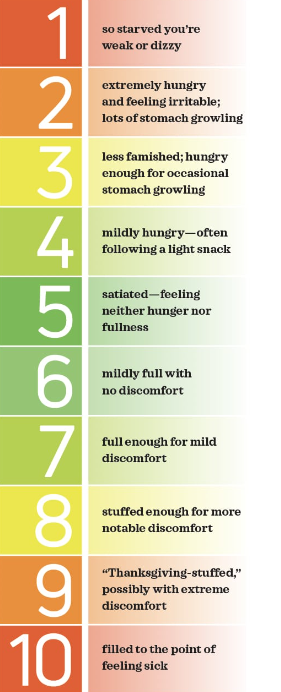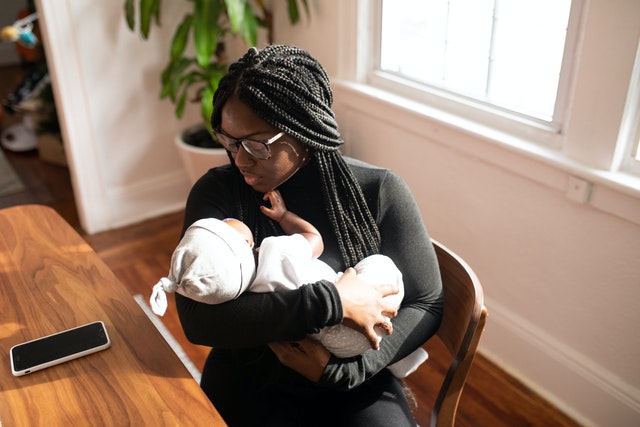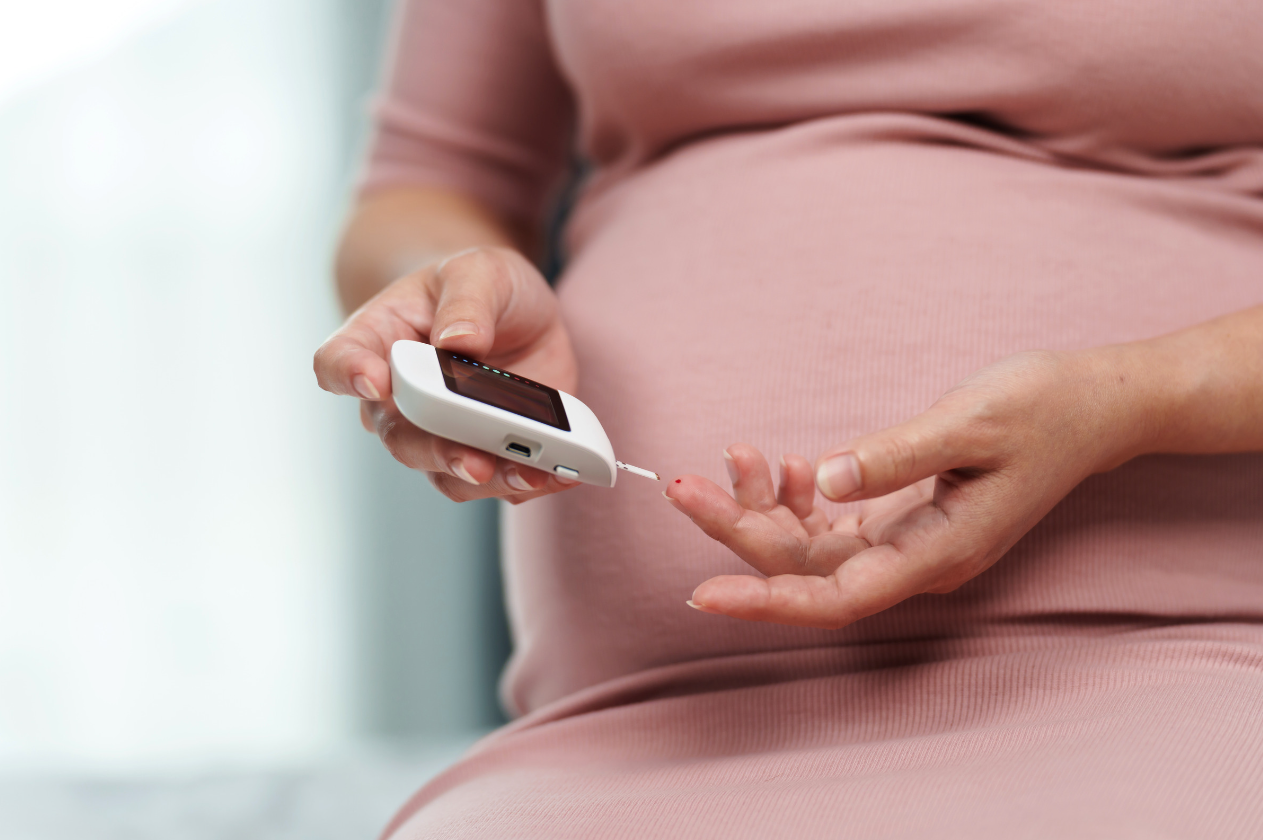What does fullness mean? What does it mean if you keep eating until you feel uncomfortable? How can you stop? These are all great and important questions to answer- especially as you’re on your intuitive eating journey. Honoring fullness is a key component of a healthy relationship with food. And fullness level tends to change with pregnancy, so knowing your fullness is helpful as you continue to adjust as your belly grows.
Before we dive in, I’d suggest checking out these past blog posts (especially the one on hunger!). The intuitive eating principles are meant to build upon each other, so if you don’t have a solid foundation set in principles 1-5, you may want to go back and touch up on those!
Principle #1: Rejecting the Diet Mentality
Principle #2: Honor Your Hunger
Principle #3: Make Peace with Food
Principle #4: Challenge the Food Police
Principle #5: Discover the Satisfaction Factor
Reasons you may be eating past fullness
As we start talking about principle #6 and how to honor our fullness, it’s important to note that many of us have been taught to do the exact opposite. Growing up this may have looked like being a member of the “clean plate club” and having to eat all of your meal, or having to eat all your dinner to then get dessert, which often leads to eating past the point of fullness. You may also feel overly cautious about “wasting food”, which drives you to eat food even when you aren’t really hungry for it.
Or, you may just be in the habit of eating the food until it’s gone. Every time you make a meal, order out, or even grab a bag of chips you know you will eat until the food is gone.
Others eat in a chaotic and rushed manner that causes you to bypass any physical sensations as you try to get food in as fast as possible. These can all be clear signs that it’s time to reconnect with your body’s fullness cues so you can truly honor your wants and needs when eating.
Try to take time to recognize what kind of eater you are. Are you eating because the food is there? Do you feel guilty if you don’t finish the food? Do you feel pressure to eat everything on your plate? Once you are able to identify how you eat you can better identify how to stop when you do reach fullness.
When you’re learning how to feel when you are full (and stop eating) really stems from the ability to make peace with all food, and know that the food you are eating will be available again in the future. Remember that you don’t have to eat all of the food now. You don’t have to say “screw it, now is my chance”. You are able to return to the food again in the future when you are both hungry and desire it again.
Recognizing physical signs of fullness
Typically when we eat we reach a point of being comfortably full. A helpful tool to use while learning to recognize your hunger is the hunger/fullness scale, as shown below.
Take a moment to look at the chart below. Where do you normally fall? Where have certain diets or eating patterns left you on the scale? What about meals? Do certain meals leave you feeling closer to one end of the scale or the other?

As you eat there are also questions you can ask yourself to check in (remember- being mindful is key and this can help bring us back to the present moment!)
- How am I feeling in my body?
- Am I feeling satisfied with what I’m eating?
- Am I still hungry?
- Does this still taste good?
Learning to identify physical feelings of fullness is a key component of intuitive eating principle #6. As you learn to tap into these physical sensations you will be able to better understand when you’re “done” with a meal. Let’s review some of the physical sensations you may notice as you start to approach fullness:
Stomach: stretching, bloating
Head: less thoughts about food and eating, the desire to eat has gone away
Mood: shifted, feeling more relaxed and calm
Energy: some people feel more energized after a meal or snack, others may feel more drowsy
Additional tips for getting in touch with your fullness:
- Create meals and snacks that include protein, fat, and fiber. This will help us feel more full and satisfied
- Be aware of your environment. Is it busy? Loud? Is something distracting you like like the TV? Try to remove outside stimulus when you can
- Avoid “filler foods” that will make you feel full but won’t last for long or really satisfy you (popcorn, sparkling water, celery). Try to include foods you actually like rather than trying to “fill up” on these foods.
- Eat with an actual plate and utensils rather than out of a bag or pot
- Try to eat when you are sitting and relaxed
- Try eating with your non-dominant hand (i.e. if you are right handed try using your fork in your left hand) this will force your brain to be more focused and present
CHALLENGE: Take a moment to reflect on your current eating habits. What is the environment usually like when you eat? How do you feel when you eat? Afterwards? Is it something that you just try to get out of the way, or is it a sacred time?
Being Mindful While Eating
Being mindful of how we can cultivate a more relaxing and enjoyable space around eating can help us feel our fullness and greatly improve our relationship with food.
Maybe for you this will look like actually making yourself a plate of food and sitting down to eat rather than eating your kids leftovers. It could also look like putting in some headphones if your house is hectic so you can feel more present and enjoy your meal.
Maybe at work this looks like putting away your laptop and actually walking away from work for your lunch break so you can cultivate a more safe, relaxing environment.
Bringing mindfulness to not only what you are eating but how and where you are eating can be really impactful!
If you’re still having a hard time understanding or feeling those physical symptoms, here are a few exercises you can try:
- Try drinking water and notice the physical sensations. Drink 2-4 cups of room temperature water (not carbonated) when you feel neutral, neither hungry or full. Give yourself 5-10 minutes to drink the water without any distractions. Drink at a normal pace and notice the sensations in your body. Can you feel the water in your stomach? Drink until you start to feel full and notice when this sensation feels like. Describe the feeling of the water going down your throat, in your stomach, asking yourself how it compares to food. See if you can notice similar feelings the next time you eat. The point of this activity is to tap into your physical body, not to delay eating when you are hungry (which diet culture has often taught us).
- You can also experiment with different foods. Try eating an apple and see how long it takes you to get hungry again. What about an apple and peanut butter? You’ll start to notice how your body responds to these foods differently.
- The “last bite threshold” (from the Intuitive Eating Workbook)- when you finish eating, reflect on how you feel physically. Let yourself sit with those thoughts for a moment. Next ask yourself: “ how would I feel if I had stopped a few bites sooner?” Really answer this question and allow the feelings to arise without judgment (maybe you feel sad or threatened by this idea). Next time you eat, when you start to feel hunger leaving and fullness creeping in, estimate roughly how many bites of food it will take to be comfortably full. Continue eating and remain aware with each bite of food, asking yourself: “could this be my last bite?”. The more you practice the more comfortable you will feel with stopping and reaching your “last bite”. The point isn’t to find the “right” amount of bites, but slowing down and tuning into your body and noticing when you are comfortably full.
Feeling your fullness in pregnancy
Feeling fullness can be harder in pregnancy, especially as you reach the end of pregnancy. Your body may feel slightly foreign to you and your hunger/fullness levels may not be what they normally are. Be gracious with yourself and accept these changes as they come.
If you have gestational diabetes in pregnancy and/or are checking your blood sugar in pregnancy it may be helpful to plan foods that will keep you full longer so you can check your levels in the amount of time you and your providers have discussed. For example, if you will be checking your blood sugars in two hours, you don’t want to get hungry before then!

Remember that intuitive eating and learning to feel your fullness is important- even in pregnancy. It’s important to check in with yourself and notice when extra support, especially if you have a history of eating disorders or disordered eating. There is no shame in asking for help- it can be incredibly transformative and help you manage your gestational diabetes and pregnancy in a more balanced and healthful way.
Know that it is really common to at past fullness or have trouble mastering this skill. Over time outside influences have given us rules and “tips” to help us ignore hunger, such as filling up on salad first just to get hungry again in an hour or ignoring hunger all day then feeling out of control later in the day. Sadly, these things have made it difficult to know how to feel our fullness and be okay with that. Remember to be gentle with yourself as you practice this skill and get more comfortable with intuitive eating.
If you’re ready to take a step towards food freedom and navigate pregnancy nutrition with ease, I’m here to help. Click here to book a free discovery call where we will chat more about you, your journey, and how I can help.



 Hi! I’m Emily.
Hi! I’m Emily.

0 Comments